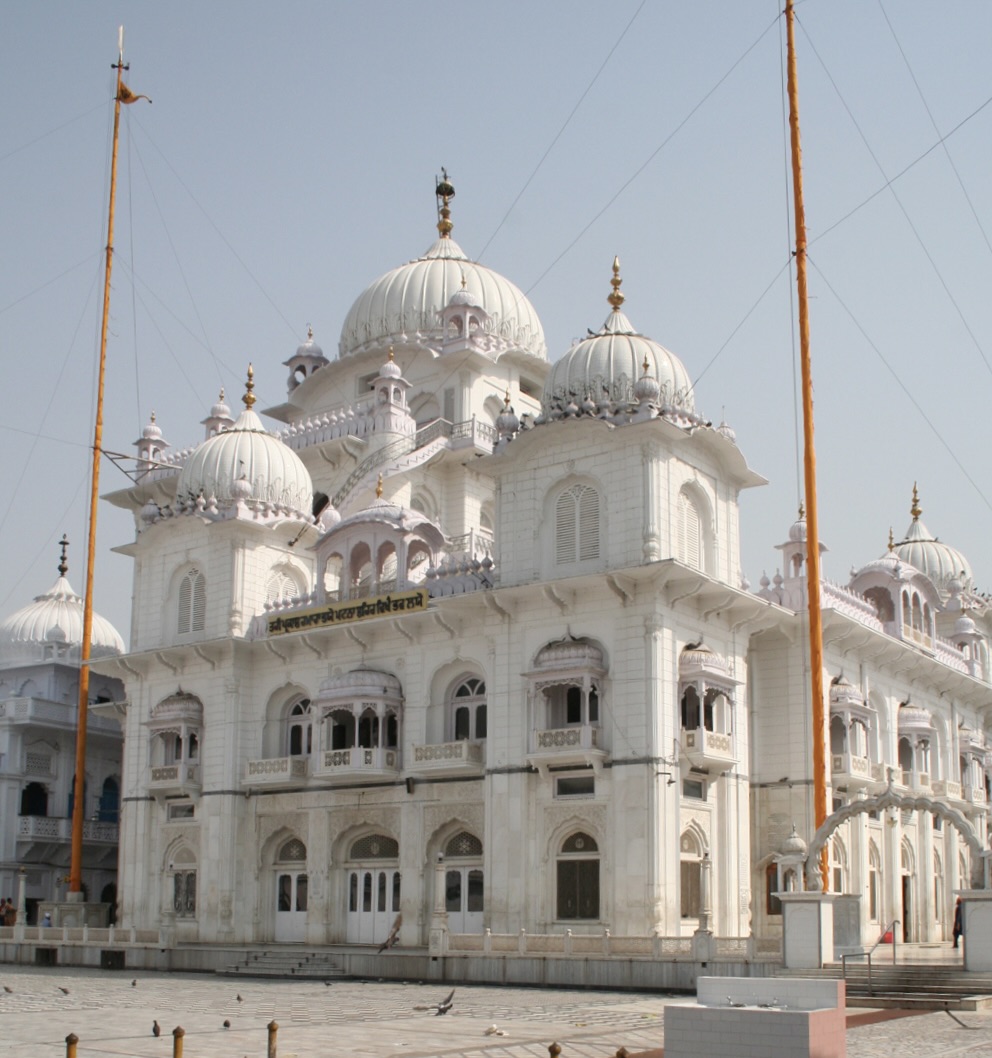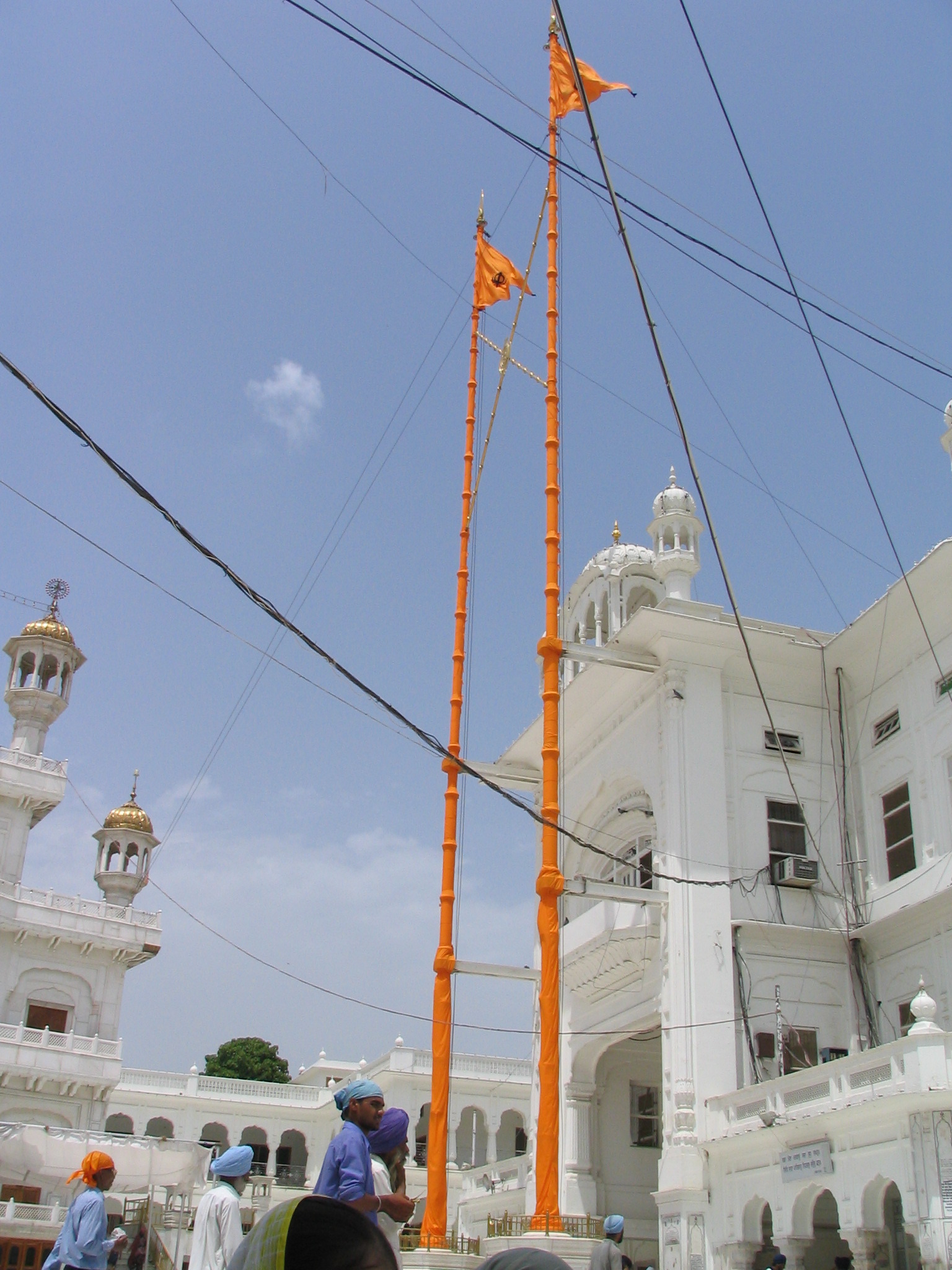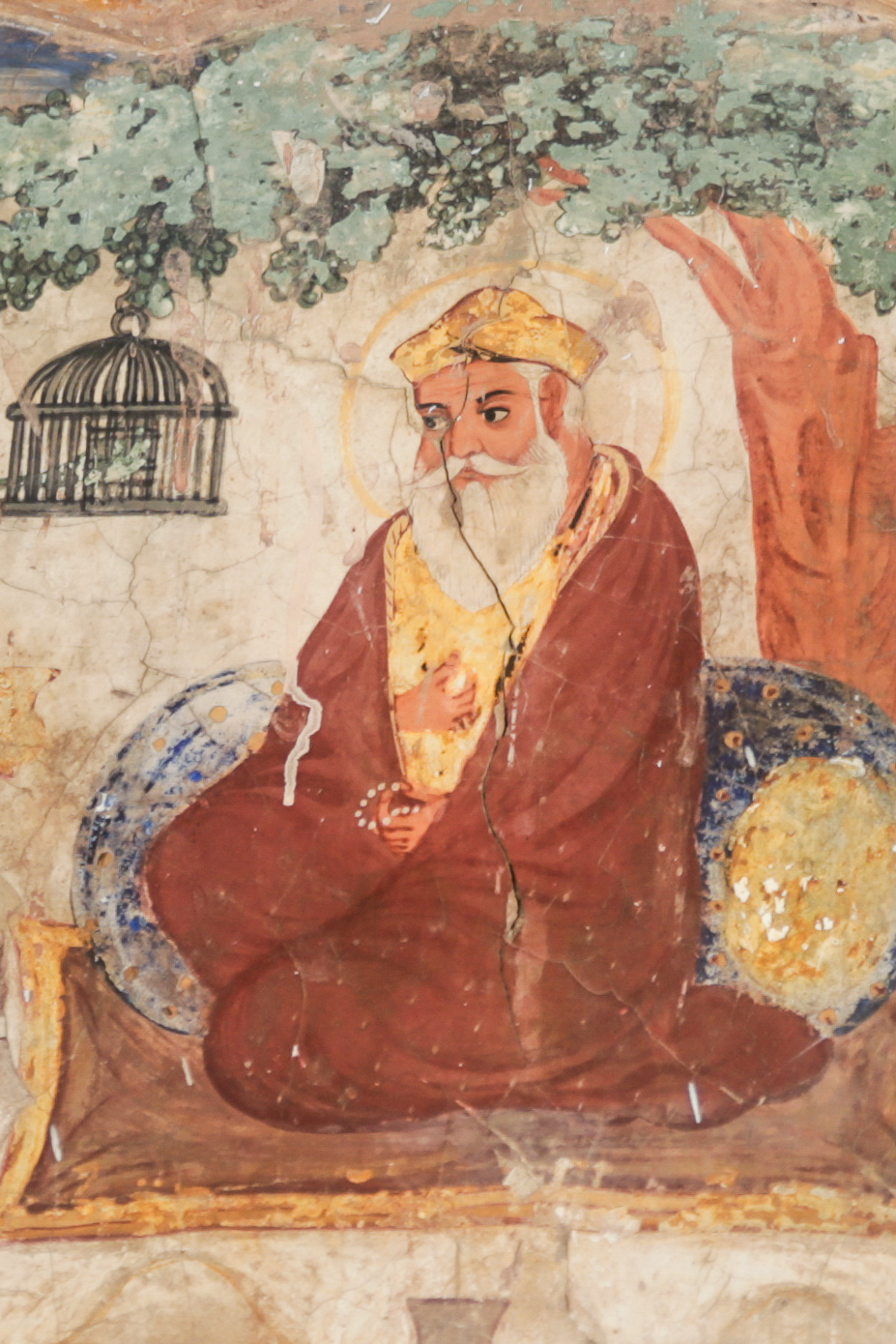|
Religion In Bihar
Hinduism is the most followed religion in Bihar, followed by nearly 82.7% of total population as per 2011 Census of India, 2011 Census. Islam is the second-most followed religion which is followed by nearly 16.8% of population. There is also a significant population of Jainism, Jains and Christians in the state. History of religion in Bihar Hindu Goddess Sita, the consort of Rama, Lord Rama, is believed to have been born in Sitamarhi district in the Mithila (region), Mithila region of modern-day Bihar. It was the Magadha, Ancient Bihar that give birth to new Indic religions: Buddhism and Jainism. Gautama Buddha attained Bodhi, Enlightenment at Bodh Gaya, a town located in the modern day district of Gaya District, Gaya in Bihar. Vasupujya, the 12th Jain Tirthankara was born in Champapuri, Bhagalpur. Vardhamana Mahavira, the 24th and last Tirthankara of Jainism, was born in Vaishali (ancient city), Vaishali around the sixth century BC. Bodh Gaya in Bihar is an important pilgrimage ... [...More Info...] [...Related Items...] OR: [Wikipedia] [Google] [Baidu] |
Hinduism
Hinduism () is an Indian religion or '' dharma'', a religious and universal order or way of life by which followers abide. As a religion, it is the world's third-largest, with over 1.2–1.35 billion followers, or 15–16% of the global population, known as Hindus. The word ''Hindu'' is an exonym, and while Hinduism has been called the oldest religion in the world, many practitioners refer to their religion as '' Sanātana Dharma'' ( sa, सनातन धर्म, lit='the Eternal Dharma'), a modern usage, which refers to the idea that its origins lie beyond human history, as revealed in the Hindu texts. Another endonym is ''Vaidika dharma'', the dharma related to the Vedas. Hinduism is a diverse system of thought marked by a range of philosophies and shared concepts, rituals, cosmological systems, pilgrimage sites, and shared textual sources that discuss theology, metaphysics, mythology, Vedic yajna, yoga, agamic rituals, and temple building, among other to ... [...More Info...] [...Related Items...] OR: [Wikipedia] [Google] [Baidu] |
Bodhi
The English term enlightenment is the Western translation of various Buddhist terms, most notably bodhi and vimutti. The abstract noun ''bodhi'' (; Sanskrit: बोधि; Pali: ''bodhi''), means the knowledge or wisdom, or awakened intellect, of a Buddha. The verbal root ''budh-'' means "to awaken," and its literal meaning is closer to awakening. Although the term ''buddhi'' is also used in other Indian philosophies and traditions, its most common usage is in the context of Buddhism. '' Vimukti'' is the freedom from or release of the fetters and hindrances. The term "enlightenment" was popularised in the Western world through the 19th-century translations of German-born philologist Max Müller. It has the Western connotation of general insight into transcendental truth or reality. The term is also being used to translate several other Buddhist terms and concepts, which are used to denote (initial) insight ('' prajna'' (Sanskrit), '' wu'' (Chinese), '' kensho'' and ''satori'' ... [...More Info...] [...Related Items...] OR: [Wikipedia] [Google] [Baidu] |
Patna Sahib
Patna City, popularly known as Patna Saheb or Patna Sahib, is a city and one of the 6 Sub-divisions (Tehsil) in Patna district, Bihar, India. Patna City is an old area of Patna. Patna City history belongs to Patliputra. It is regarded as very sacred by the Sikhs in India. The tenth Guru of the Sikhs, Guru Gobind Singh was born there. The Patna Saheb Gurudwara is considered to be one of the holiest of the five "Takhts" or seat of authority of the Sikhs. The place is named Harminder Takht though the Sikhs respectfully call it Patna Sahib. The famous Guru Gobind Sahib Gurudwara is an important shrine for Sikhs from all over the world. ''Ashok Rajpath'' (road) connects Patna City to Patna. Overview Bengali Colony, Jhauganj, Lodi Katra, Rambagh, Kali Asthan, Nehru Tola, Marufganj, Harmandir Gali, Machratta, Hajiganj, Mirchai Gali, Bihar Mills Colony are major areas of Patna City. The main Guru Gobind road connects Patna Sahib Gurudwara and Patna City Chowk. Mangal Talab is a wat ... [...More Info...] [...Related Items...] OR: [Wikipedia] [Google] [Baidu] |
Gurdwara
A gurdwara (sometimes written as gurudwara) (Gurmukhi: ਗੁਰਦੁਆਰਾ ''guradu'ārā'', meaning "Door to the Guru") is a place of assembly and worship for Sikhs. Sikhs also refer to gurdwaras as ''Gurdwara Sahib''. People from all faiths are welcomed in gurdwaras. Each gurdwara has a '' Darbar Sahib'' where the current and everlasting guru of the Sikhs, the scripture Guru Granth Sahib, is placed on a (an elevated throne) in a prominent central position. Any congregant (sometimes with specialized training, in which case they can be known by the term granthi) may recite, sing, and explain the verses from the Guru Granth Sahib, in the presence of the rest of the congregation. All gurdwaras have a hall, where people can eat free vegetarian food served by volunteers at the gurdwara. They may also have a medical facility room, library, nursery, classroom, meeting rooms, playground, sports ground, a gift shop, and finally a repair shop. A gurdwara can be identified from a dist ... [...More Info...] [...Related Items...] OR: [Wikipedia] [Google] [Baidu] |
Anandpur Sahib
Anandpur Sahib, sometimes referred to simply as Anandpur (lit. "city of bliss"), is a city in Rupnagar district (Ropar), on the edge of Shivalik Hills, in the Indian state of Punjab. Located near the Sutlej River, the city is one of the most sacred places in Sikhism, being the place where the last two Sikh Gurus, Guru Tegh Bahadur and Guru Gobind Singh, lived. It is also the place where Guru Gobind Singh founded the Khalsa Panth in 1699. The city is home to Takhat Sri Kesgarh Sahib, Third of the five Takhts in Sikhism. The city is a pilgrimage site in Sikhism. It is the venue of the largest annual Sikh gathering and festivities during Hola Mohalla in the spring season.Gurmukh Singh (2009)Anandpur Sahib Encyclopedia of Sikhism, Editor in Chief: Harbans Singh, Punjab University Location Anandpur Sahib is located on National Highway 503 that links Kiratpur Sahib and Chandigarh to Nangal, Una and further Kangra, Himachal Pradesh. It is situated near the Sutlej river, the longe ... [...More Info...] [...Related Items...] OR: [Wikipedia] [Google] [Baidu] |
Guru Gobind Singh
Guru Gobind Singh (; 22 December 1666 – 7 October 1708), born Gobind Das or Gobind Rai the tenth Sikh Guru, a spiritual master, warrior, poet and philosopher. When his father, Guru Tegh Bahadur, was executed by Aurangzeb, Guru Gobind Singh was formally installed as the leader of the Sikhs at the age of nine, becoming the tenth and final human Sikh Guru. His four biological sons died during his lifetime – two in battle, two executed by the Mughal governor Wazir Khan.; Among his notable contributions to Sikhism are founding the '' Sikh'' warrior community called ''Khalsa'' in 1699 and introducing ''the Five Ks'', the five articles of faith that Khalsa Sikhs wear at all times. Guru Gobind Singh is credited with the ''Dasam Granth'' whose hymns are a sacred part of Sikh prayers and Khalsa rituals. He is also credited as the one who finalized and enshrined the ''Guru Granth Sahib'' as Sikhism's primary scripture and eternal Guru. Family and early life Gobind Singh was t ... [...More Info...] [...Related Items...] OR: [Wikipedia] [Google] [Baidu] |
Sikh Gurus
The Sikh gurus ( Punjabi: ਸਿੱਖ ਗੁਰੂ) are the spiritual masters of Sikhism, who established this religion over the course of about two and a half centuries, beginning in 1469. The year 1469 marks the birth of Guru Nanak, the founder of Sikhism. He was succeeded by nine other human gurus until, in 1708, the '' Guruship'' was finally passed on by the tenth guru to the holy Sikh scripture, Guru Granth Sahib, which is now considered the living Guru by the followers of the Sikh faith. Etymology and definition ''Guru'' (, ; sa, गुरु, Punjabi: ਗੁਰੂ, IAST: ''guru'') is a Sanskrit term for a "teacher, guide, expert, or master" of certain knowledge or field. Bhai Vir Singh, in his dictionary of Guru Granth Sahib describes the term Guru as a combination of two separate units: "Gu;(ਗੁ)" meaning darkness and "Rū;(ਰੂ)" which means light. Hence, Guru is who brings light into darkness or in other words, the one who enlightens. Bhai Vir Singh's defin ... [...More Info...] [...Related Items...] OR: [Wikipedia] [Google] [Baidu] |
Vaishali (ancient City)
Vaishali, Vesali or Vaiśālī was a city in present-day Bihar, India, and is now an archaeological site. It is a part of the Tirhut Division. It was the capital city of the Vajjika League of Vrijji mahajanapada, considered one of the first examples of a republic around the 6th century BCE. Gautama Buddha preached his last sermon before his death in c. 483 BCE, then in 383 BCE the Second Buddhist council was convened here by King Kalasoka, making it an important place in both Jain and Buddhist religions. It contains one of the best-preserved of the Pillars of Ashoka, topped by a single Asiatic lion. Vaishali is also home to possibly the earliest known example of a stupa, the Buddha relic stupa which is said to contain the ashes of the Buddha. The city finds mention in the travel accounts of Chinese explorers, Faxian (4th century CE) and Xuanzang (7th century CE), which were later used in 1861 by British archaeologist Alexander Cunningham to first identify Vaiśālī with ... [...More Info...] [...Related Items...] OR: [Wikipedia] [Google] [Baidu] |
Mahavira
Mahavira (Sanskrit: महावीर) also known as Vardhaman, was the 24th ''tirthankara'' (supreme preacher) of Jainism. He was the spiritual successor of the 23rd ''tirthankara'' Parshvanatha. Mahavira was born in the early part of the 6th century BCE into a royal Kshatriya Jain family in ancient India. His mother's name was Trishala and his father's name was Siddhartha. They were lay devotees of Parshvanatha. Mahavira abandoned all worldly possessions at the age of about 30 and left home in pursuit of spiritual awakening, becoming an ascetic. Mahavira practiced intense meditation and severe austerities for twelve and a half years, after which he attained '' Kevala Jnana'' (omniscience). He preached for 30 years and attained Moksha (liberation) in the 6th century BCE, although the year varies by sect. Historically, Mahavira, who revived and preached Jainism in ancient India, was an older contemporary of Gautama Buddha. Jains celebrate ''Mahavir Janma Kalyanak'' every ye ... [...More Info...] [...Related Items...] OR: [Wikipedia] [Google] [Baidu] |
Bhagalpur
Bhagalpur is a city in the Indian state of Bihar, situated on the southern banks of the river Ganges. It is the 2nd largest city of Bihar by population and also the headquarters of Bhagalpur district and Bhagalpur division. Known as the Silk City, it is a major educational, commercial, and political center, and listed for development under the Smart City program, a joint venture between Government and industry. The Gangetic plains surrounding the city are very fertile and the main crops include rice, wheat, maize, barley, and oilseeds. The river is home to the Gangetic dolphin, the ''National Aquatic Animal of India'', and the Vikramshila Gangetic Dolphin Sanctuary is established near the town. The city holds the largest Manasa Puja and one of the largest processions in Kali Puja, an intangible cultural heritage of the region. Demography As of the 2011 India census, the Bhagalpur Urban Agglomeration has a population of 410,210, of which 218,284 were males and 191,926 were f ... [...More Info...] [...Related Items...] OR: [Wikipedia] [Google] [Baidu] |
Champapuri
Champapuri is a village in Bhagalpur district in the Indian state of Bihar. It is the site of the ancient city of Champa, the capital of the Anga mahajanapada. Champapuri is claimed to be the only place where all the five kalyanas- garbha, janma, diksha, kevalagnana and moksha kalyana of Bhagwan Vasupujya took place. It is said that Bhagawan Adinatha, Bhagwan Parshwanatha and Bhagawan Mahavira had their monsoon stay at this place. Bhagawan Mahavira had his third and twelfth monsoon stay at this place. There is an idol of Bhagavan at the temple. Many Jain ascetics like Muni Dharmaghosh, Muni Padmarath, Ashok and Anchal attained salvation at this place. This place being a Siddhakshetra many ascetics like Anchal,Ashok and Padamrath attained salvation at this place. An ancient temple of Champanala is seen at this place. Significance Champapuri is also believed to be birthplace of Vasupujya, the twelfth tirthankara. Many Jain ascetics, like Muni Dharmaghosh, Muni Padmarath, A ... [...More Info...] [...Related Items...] OR: [Wikipedia] [Google] [Baidu] |
Tirthankara
In Jainism, a ''Tirthankara'' (Sanskrit: '; English: literally a 'ford-maker') is a saviour and spiritual teacher of the ''dharma'' (righteous path). The word ''tirthankara'' signifies the founder of a '' tirtha'', which is a fordable passage across the sea of interminable births and deaths, the '' saṃsāra''. According to Jains, a ''Tirthankara'' is an individual who has conquered the ''saṃsāra'', the cycle of death and rebirth, on their own, and made a path for others to follow. After understanding the true nature of the self or soul, the ''Tīrthaṅkara'' attains '' Kevala Jnana'' (omniscience). Tirthankara provides a bridge for others to follow the new teacher from ''saṃsāra'' to ''moksha'' (liberation). In Jain cosmology, the wheel of time is divided in two halves, Utsarpiṇī' or ascending time cycle and ''avasarpiṇī'', the descending time cycle (said to be current now). In each half of the cosmic time cycle, exactly twenty-four ''tirthankaras'' grace thi ... [...More Info...] [...Related Items...] OR: [Wikipedia] [Google] [Baidu] |








.png)

